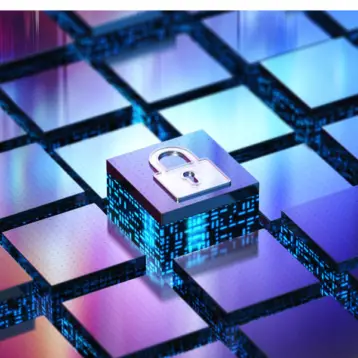In today’s world where digital advancements rule the roost, keeping your information systems secure is absolutely vital for your business to run smoothly. If someone enters your company’s systems and data without permission, it could result in hefty financial hits, tarnish your reputation, and you might even find yourself tangled up in legal troubles.
As a matter of fact, unauthorized access accounts for 43% of all breaches globally. This staggering statistic underscores the importance of the measures highlighted in this article.
By leveraging technology, formulating strict access policies, and fostering a culture of security, you can fortify your organization against potential threats and ensure the safety of your confidential data.

Harnessing ITGC Controls to Strengthen Security
A key strategy in preventing unauthorized access is the implementation of information technology general controls. In fact, ITGC controls are critical in managing and governing IT systems and ensuring data integrity. They play a fundamental role in ensuring that your systems operate as intended and that your data is reliable and accessible only by authorized personnel.
when it comes to privileged access, there is more than a privilege assignment to think through. Privileged Identity Management (PIM), which also provides additional layers of security, as well as Endpoint Privilege Management (EPM) is more concerned with governing privileged access to network devices.
ITGCs include logical access controls, which manage who has access to systems, and change management controls, which ensure that changes to systems are properly authorized, tested, and approved. Additionally, ITGC controls are relevant to all aspects of an organization, and some of the most common controls include accounting, administrative, and operational controls, security policies, etc.
The implementation of ITGC controls is an ongoing process that requires regular review and updating. This is because the IT environment is constantly changing, with new technologies, threats, and vulnerabilities emerging all the time. Hence, it is essential to have a system in place to ensure that your ITGC controls remain effective and relevant.
Employee Education and Awareness
While technology plays a significant role in securing your organization’s systems and data, your employees are equally important. Despite the most advanced security systems in place, a single error from an unaware employee can lead to a data breach. Therefore, fostering a culture of security and promoting employee education and awareness is crucial.
Regular training sessions should be conducted to educate employees about the latest threats and the best practices to follow to avoid them. Employees should be made aware of the importance of strong, unique passwords, the dangers of clicking on suspicious links, and the procedures to follow in case of suspected unauthorized access.

Implementing Strict Access Policies
Implementing strict access policies is another essential step in preventing unauthorized access within your organization. Access to systems and data should be granted on a need-to-know basis, with employees only given access to the information necessary to perform their job functions. This concept, known as the principle of least privilege (PoLP), can significantly reduce the risk of unauthorized access.
Additionally, regular audits of user access rights should be conducted to ensure that access privileges remain appropriate. For instance, when an employee’s role changes or they leave the company, their access rights should be immediately reviewed and adjusted, or revoked as necessary.
Regular System Updates and Patches
Maintaining updated systems is another crucial aspect of preventing unauthorized access. Hackers often exploit vulnerabilities in outdated systems to gain unauthorized access to an organization. Regularly updating your systems and applying patches as they become available can help to protect against such threats.
It’s also crucial to have a sturdy game plan ready to swing into action if things go wrong. This plan should map out all the steps you’ll need to take if you suspect that someone with unauthirzed access has entered your systems. It should cover how to stop the incident in its tracks, dig into what caused it, and stop the same thing from happening again in the future.
Furthermore, a robust disaster recovery plan should be in place. This plan should provide clear guidance on how to recover data and restore system functionality in the event of a breach. This includes having regular data backups, ideally in a geographically separate location, to protect against physical disasters.
Conclusion
Putting a stop to unauthorized access in your organization isn’t a one-off chore, but rather a continual pledge. By rolling out ITGC controls, boosting your team’s knowledge and awareness, putting tight access rules into place, and regularly sprucing up your systems, you can dramatically cut down the risk of unwanted access and keep your organization’s systems and data safe and secure.
Sure, it requires a steady stream of focus, resources, and commitment, but the tranquility and safety it provides are more than worth the effort. Your diligent work in locking down your organization does more than just safeguard your data, it also boosts your organization’s reputation and trusts in the eyes of your clients, customers, and partners.









